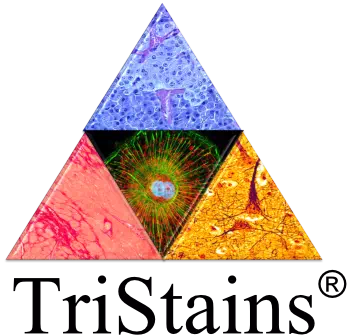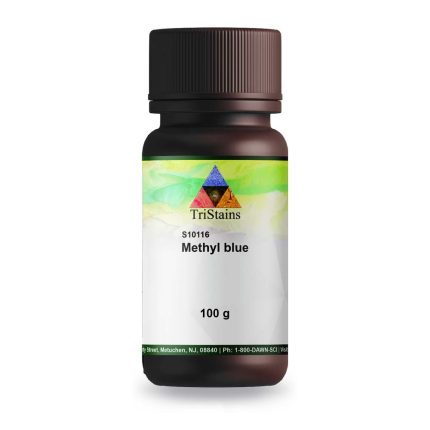Buy High Quality Guinea Green B (4680-78-8) MF: C37H35N2NaO6S2 | MW: 690.8. from Tristains.
Guinea Green B, also referred to as Acid Green 3, is a synthetic dye categorized under the triarylmethane family. This green powder is water-soluble, resulting in a vibrant green solution. With a chemical formula of C37H35N2NaO6S2, Guinea Green B is classified as an acid dye. This dye is widely employed in biological staining methods and various industrial processes. Guinea Green B is especially recognized for its application in histological and microbiological staining, as it has the capability to attach to specific cellular components, creating clear and contrasting colors.
“TriStains”, Histological Stains/Biological Stains that offer range of stains used in Histology, Cytology, Microbiology and Hematology laboratories. TriStains meet the highest quality standards and give excellent color performance of desired components of cells and tissue in life science laboratories. TriStains series products are carefully tested to ensure accurate, reliable, and reproducible results. Our products are available in different packaging sizes to allow you to get all types of stains & Indicators for your specific purposes from a single source.
In-addition Tristains also deals in numerous Laboratory Supplies, Chemicals, Equipment, Instruments, Reagents, Standard Solutions, Buffers, Histological Stains/Biological Stains & Indicators and many more, for more information please visit our website www.tristains.com or email to [email protected] we will be happy to help you. All Tristains Products are exclusively distributed by Dawn Scientific Inc (https://dawnscientific.com)
Application :
- Guinea Green B has been used as a pharmacophore compound to study its inhibitory action on papillomavirus type 16 E6 protein.
- It is used in combination with other dyes to stain collagen and muscle fibers in tissue sections, helping to differentiate between these structures.
- It is employed in staining protocols to visualize and identify bacterial and fungal species under a microscope.
- It can be used to stain plant tissues, aiding in the study of plant morphology and anatomy.
Benefits :
- Provides excellent contrast, allowing for clear differentiation of cellular and tissue structures
- Producing consistent and reliable staining results
- Versatile and enhanced visualization













Reviews
There are no reviews yet.